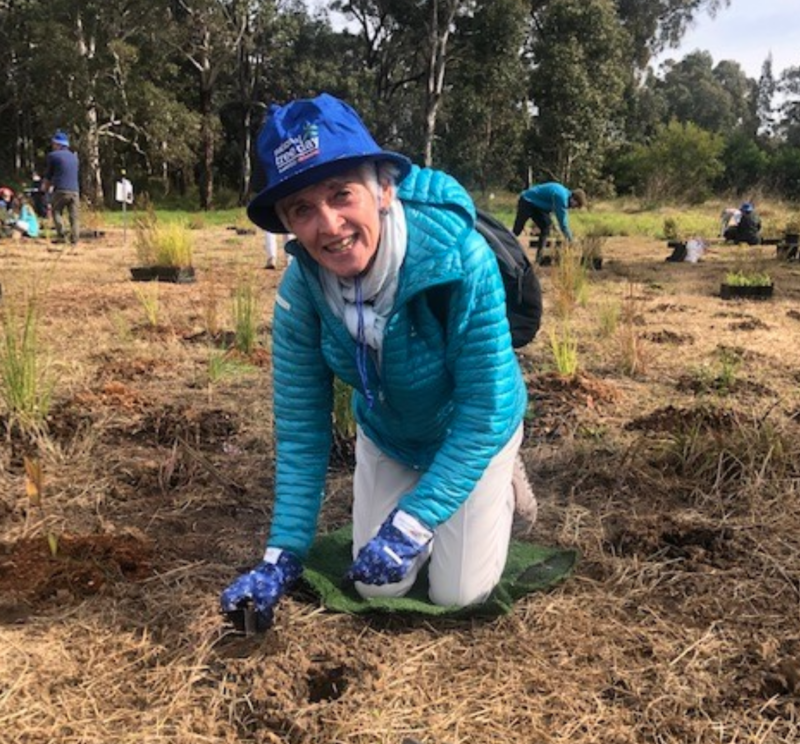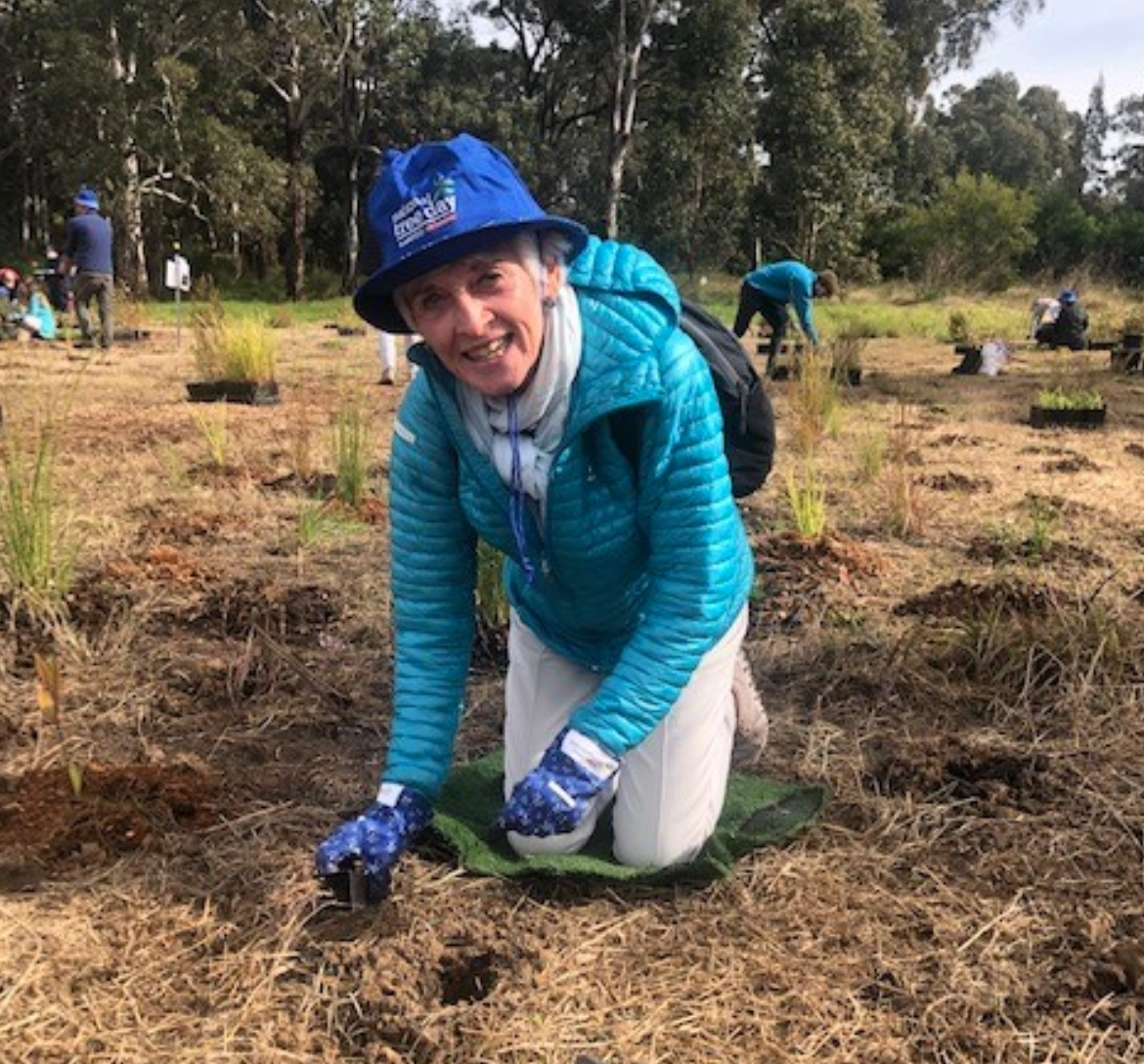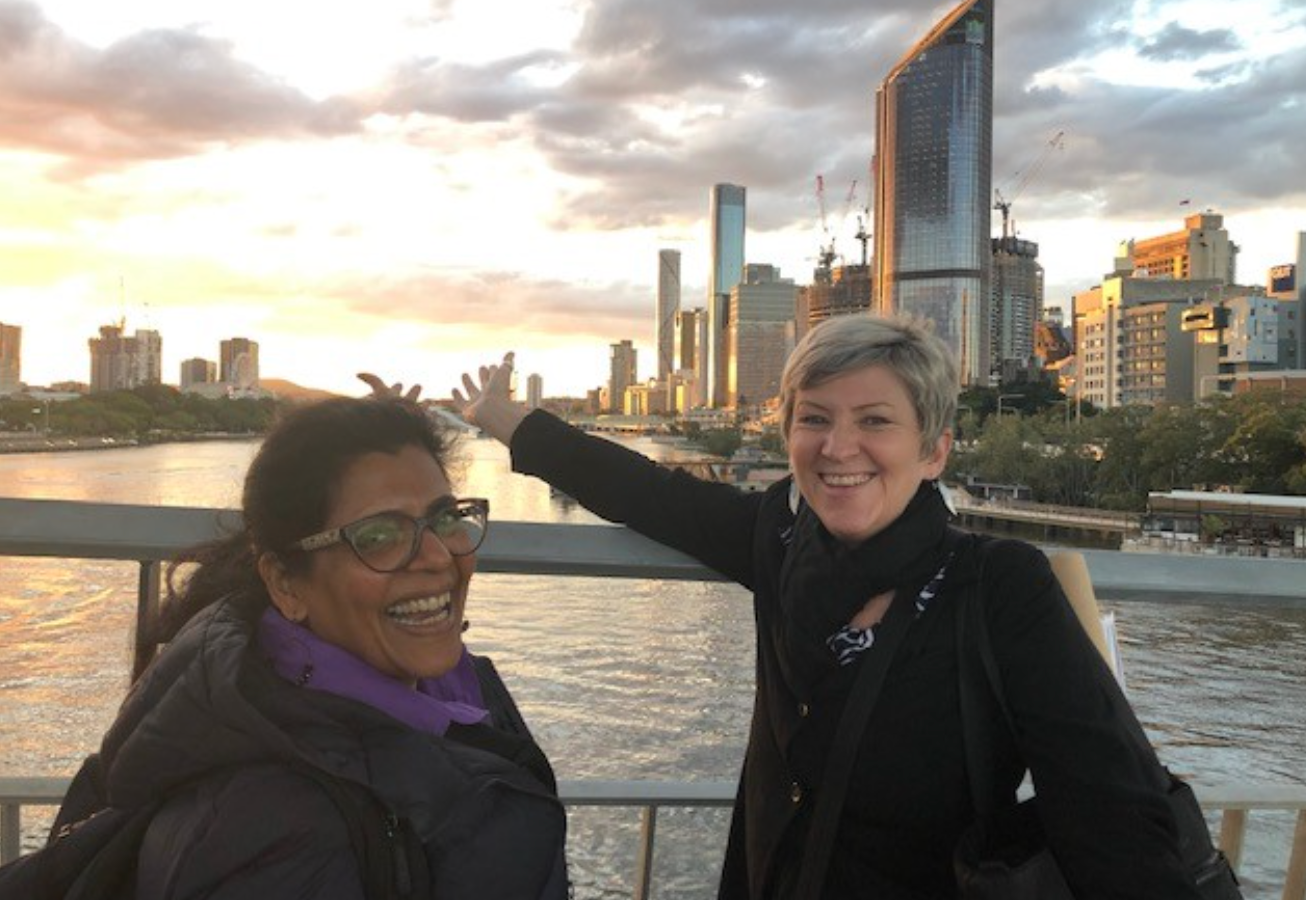Australia Part 6: Strengthen cooperation between Australia and the Netherlands
September 19, 2022
This is the last blog of Jacqueline Cramer about her 2 month visit to Australia. During her stay she gave an impressive 34 lectures, 16 presentations at workshops and engaged in 22 conversations with representatives of government, industry and non-governmental organizations. Jacqueline visited the cities Melbourne, Canberra, Sydney and Brisbane and thoroughly enjoyed the days in the beautiful countryside in Gippsland, Bega Valley, Depot Beach and SW Queensland.
In this last blog Jacqueline gives credit to everybody who supported this successful visit, summarizes the main nuclei of circular change in Australia and wraps up by highlighting the relevance of strengthening the cooperation between Australia and the Netherlands on circular economy.
Read the full blog below.

"The vast landscapes and magnificent seashores are overwhelming. To help conserve nature, I planted more than 50 trees in the outskirts of Sydney on National Tree Day, organized by Planet Ark"
Jacqueline Cramer
The leading efforts of Australia in circular economy
In this last blog I want to start by thanking the people and organisations that have supported me during my visit to Australia. The great number of activities could not have been carried out without the support of the local partners with whom I have worked closely together. These were the Australian Circular Economy Hub/Planet Ark (particularly Dr Nicole Garofano ), RMIT (particularly Professor Usha Iyer-Raniga) and the Netherlands diplomatic missions (particularly Dr Dai Forterre, Andrea Farrow, Nathan de Bruijn and Stephanie van Loon). They joined me during the whole trip, prepared all the meetings, organized my travel schedule and hotels, moderated the workshops and wrote reports on all events. When I repeatedly thanked them for their efforts, they stressed that my trip was a great learning experience for them as well. It gave them the opportunity to connect with many more people and enhanced their efforts to spark the transition to circular economy. I am also grateful for the financial support of a great number of partners: the Dutch Embassy, ING Bank, BUILT, MIRVAC, RABOBANK, State of Matter, Planet Ark, RMIT University, UNSW, QUT and Monash Business School.

From right to left: Ambassador Marion Derckx, Sr. Policy Officer Economic Affairs Dr Dai Forterre (till September 2022) and Operation manager Maayke Cramers of the Dutch Embassy (who will take over the portfolio of Dai Forterre in September 2022).
With our core team, we have identified the main nuclei of change for implementing circular economy in Australia and discussed follow-up activities which the team will discuss with the people we met. We prioritized five main nuclei of change:
- Circular procurement at national and local government level: there is great interest among governments to take up this issue and share experiences with the Netherlands. Joan Prummel, a Dutch expert on circular procurement will visit Australia in October to assist the Australian Circular Economy Hub in performing two day workshops with government representatives in different states. The Dutch database of PIANOo that contains technical information on the circularity of major product groups and the book of Copper8 ‘Circular Procurement in 8 steps’ will be used as a starting point. Moreover, Dutch companies that provide circular products and services will also be showcased.
- Circular building and construction: Australian frontrunners in this sector are keen to integrate circularity in their business. However, they understand that cooperation is needed to scale up. Such cooperation among companies and with government is not common in Australia. The attitude towards each other is more antagonistic than collaborative. This makes it harder to set up joint initiatives, like the Dutch Concrete Agreement or Building Agreement Steel. When I explained the approach of both Agreements the Australian building industry showed much interest but stressed that they were not familiar with how to establish such forms of cooperation. As a result, companies mainly focus on developing their own icon projects. How to scale up under such conditions was a question often raised. Our team concluded that the best way to proceed is through large scale area developments in which companies and government are forced to collaborate. These initiatives can be the breeding ground for the development of common instruments, performance-based standards and procurement policies needed for mainstreaming circular building and construction. During the visit I was impressed by the opportunities that can be created to integrate circularity in area development, e.g. in the planning of the Olympics in Brisbane in 2032, and in the Greater Sydney redevelopment with the Greater Cities Commission. The Dutch Diplomatic Missions, RMIT and the Australian Circular Economy Hub will jointly investigate the possibilities to support these areas in integrating circularity in their planning.
- Circular textiles: this is a second sector that clearly shows interest in the acceleration of circular initiatives. Work on circular design, reuse and recycling has already started by universities in close cooperation with clothing companies. Queensland seems to be most advanced having several small ecosystems already built or in the making, but also in Victoria and New South Wales circular textile gets growing attention. The Netherlands’ experiences were valuable for the audience, particularly, the Dutch Fiber sorting technology of Wieland, recycling technologies, options for the reuse of materials and the experiences with circular workwear. Here, follow-up activities are planned by the Dutch Diplomatic Missions and the Australian Circular Economy hub.
- Other areas of interest: besides the main three areas mentioned above, three issues that we did not touch upon at length, will become more prominent in the coming years. These are plastics, food (waste) and minerals/metals. Since there is a ban on the export of waste, among which include plastic, the urgency to find circular solutions for the plastic problem has increased. The first step is to improve collection and logistics systems, while at the same time adopt actions of how to prevent, reuse and recycle plastic with the highest value possible. Surely, there will be possibilities to cooperate between Australia and the Netherlands in this area. Similarly, food waste is a big issue. Various states set up separate collection of the food – and greenery waste of households, but how to recycle these resource streams with high value does not get much attention yet, except for composting. Finally, the strategic role Australia can play in the provision of minerals and metals in the coming decennia, will be of great importance, too. It is not a broad societal or political debate yet, but I can imagine it will be in the near future.
- Research community: during my visit the Australian network of researchers interested in circular economy was launched. The network will formulate a research program and collaborate in joint projects to enlarge the knowledge basis of circular economy in cooperation with industry and communities. Moreover, the researchers are interested to establish a ‘Green Brain’, comparable to the Dutch ‘Het Groene Brein’. This organization aims to pick the brains of researchers to answer questions raised in society about circular economy.

Local Partners from right to left: Dr. Nicole Garofano of the Australian Circular Economy Hub/Planet Ark and Professor Usha Iyer-Raniga of RMIT University (picture taken in Brisbane) .
Strengthening circular cooperation between Australia and the Netherlands
Thus, there are various areas of concern in which Australia and the Netherlands can strengthen their longstanding cooperation. However, I experienced during my visit that the Australian people were also very interested in my view on governance: a continuous interaction between strong government policies and instruments on circular economy (public governance) and goal-oriented, bottom-up circular initiatives (network governance). The idea of building bottom-up coalitions of the willing and taking action appealed to the audience. They stated that the tendency is to wait for the government to act, often without industry or citizens starting circular initiatives themselves. Hearing the many examples of network governance inspired the people to spark circular initiatives themselves. After each lecture, my two books How to network governance powers the circular economy; Ten guiding principles for building a circular economy, based on Dutch experiences (2020) and Building a circular future; Ten takeaways for global changemakers (2022), were frequently downloaded. A good sign, I would say. As I described in the last book, the particular socio-cultural and political context of public and network governance will influence how circular economy can be implemented. However, in Australia, people stated that both types of governance are also needed too.
By working closely with my Australian counterparts, we created a breeding ground for joint circular initiatives between Australia and the Netherlands. We have met the people willing to act as frontrunners, and the team will discuss follow-up actions with them. As the Dutch diplomatic missions stay involved, I am sure the Netherlands will continue working with Australia on circular economy. The next stage will be focused on establishing circular initiatives in which Dutch companies and government representatives can play a role. I will keep in touch with the wonderful team that made my visit to Australia worthwhile. Together with professor Usha Iyer-Raniga, I’ll write a book about Circular Economy and the Australian experiences. Hopefully, this book will inspire many more Australians to embark on the circular economy journey.
Finally, this visit was also educational to better understand the specific role Holland Circular Hotspot can fulfil in paving the way for collaboration on circular economy between the Netherlands and other countries, including the contribution of Dutch companies. My conclusion is that it makes much more sense to build longstanding relationships with countries on circular economy than just working in an ad-hoc, stand alone manner. The transition to a circular economy cannot be realized by individual companies, especially not when it concerns foreign companies. You need to build a network of parties that jointly set up circular initiatives. Through this visit and beforehand through the Dutch Embassy a longstanding relationship has been created which forms a fertile ground for collaboration between Australia and the Netherlands. It was a great pleasure being part of this mission and establishing such pleasant and inspiring ties with the Australian counterparts and all other people I met. I sincerely hope that it spurs the transition to circular economy in Australia and that many opportunities for collaboration will follow.
